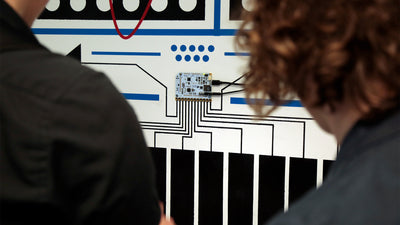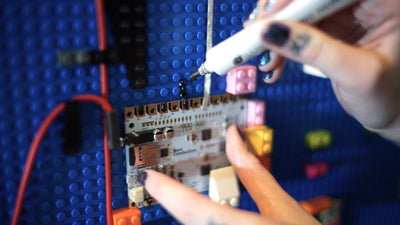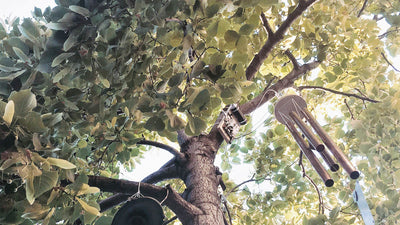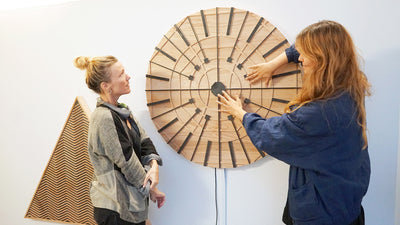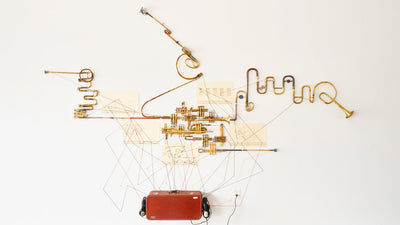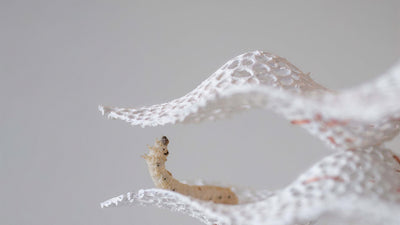Moonshot Project - A Letterpress Synthesizer Using the Touch Board

Ever seen a synthesiser with a keyboard made with conductive paint? Yes, that's right, a wood and paper synthesiser that it's totally conductive.
As a graphic designer, William Muschinske tries to embody modern design elements with newer technology to explore new perspectives on how, and on what material, one can design.
Read below more details about the project concept and how he created the "Moonshot Project" using Bare Conductive tools.
This project was part of a letterpress class in William's prototyping and letterpress lab at the University of Central Oklahoma. The brief was to make a paper toy. William says that he had been playing around with the idea of making a miniature synthesiser and after some research came across Bare Conductive, which led him to think that this could be a playable synthesiser.
He designed a control panel that was inspired by a Moog synthesiser from the '80s and used a laser cutter to make the wood side panelling. After letter pressing the front panel, he used a brayer and letterpressed ''Electric Paint'' as the keys. The keys plate was also cut using the laser cutter out of birch wood. All of this was pressed onto Crane’s Lettra 120IB paper cover weight paper.
He hid the Touch Board underneath the paper and cold soldered leader wires to the ends of the connectors and cold soldered the other ends to the back of the keys. This all ran out into Pro Tools as his output source. William used the Arduino code portal to upload Bare's MIDI code onto the Touch Board, then ran the outs, first through a few guitar pedals he had laying around, and then into the computer.
The Touch Board is the central brain of this project, encased by letter pressed sheets of Lettra paper housed neatly in a stained birch enclosure to give it a more antique-type look.
Project Moonshot is a playable synthesiser that allows the user to input and record midi-playable notes on letterpressed paper. Once the user touches any of the letterpressed keys, it activates the Touch Board to send the signal out of the back of the synth, through whatever desired pedals or effects, and out into either an amp or a recording interface.
Using 12 notes activated by using the Bare Conductive Electric Paint, the user finds themselves in an experience of paper and ink meeting musicality in real time.
Images & Video: William Muschinske
We love it when you share your projects! Post your project on Instagram, YouTube, or Twitter, and make sure to tag @bareconductive or use #bareconductive. You can also send your videos and photos to info@bareconductive.com so we can post them on our site for the world to see.


